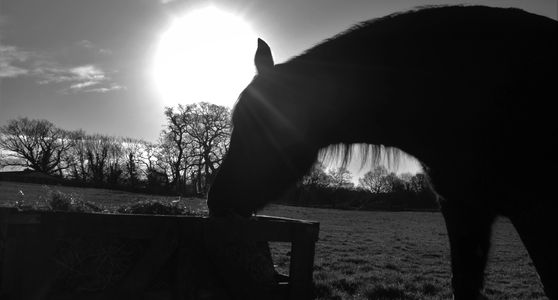What, why, how, when?
WHAT is Equine Massage Therapy?
Massage is the manipulation and mobilisation of the soft tissues of the body - mainly muscles and connective tissue (fascia). It is an ancient complementary therapy first documented in around 2,700BC, believed to have originated in China.
Equine Massage Therapy is a relatively new treatment, developed and adapted from the human form of Sports Massage, recognising that, for all the differences between species, our core building blocks are fundamentally the same and can benefit from the same therapeutic practices.
WHY use Equine Massage Therapy?
A muscle is a muscle is a muscle...
There are over 700 muscles in a horse's body, any and all of which can be put under adverse pressure through everyday training and activities, develop aches and pains, tweaks, twinges, knots and hot spots. We can 'feel it' after a hard days work, an incidence of stress or prolonged inactivity, or even a change in weather and a horse can be affected in exactly the same way.
Just like humans, horses can suffer from pain and discomfort for a multitude of reasons and as a prey species they are naturally predisposed to 'hide' discomfort, the strain of which is borne by the musculoskeletal system. These areas of discomfort can be hard to locate but that is something that a good Equine Massage Therapist is able to do.
HOW Equine Massage Therapy works?
A good professional massage therapist can locate areas of concern, tension, tightness and trigger points. They then have the skills required to effectively apply therapeutic hands on techniques specifically designed to alleviate the associated issues. Equine Massage Therapy can increase circulation, reduce muscle spasms, relieve tension and enhance muscle tone, in turn promoting healing and allowing the horse to relax, resulting in a reduction in pain and discomfort and an increase in their range of motion.

WHEN to use Massage?
All horses can benefit from Equine Massage Therapy - from youngsters to retirees, happy hackers to 5* competition horses. Massage can be of benefit as a routine sports treatment, pre and post competition, as an integral part of injury rehabilitation, to fight off the aches and pains of old age, at a time of stress, for relaxation of the mind and body, or simply a birthday treat !
Frequency of treatments is a very personal thing and is tailored to your individual requirements - some horses may benefit from weekly treatments whereas others may only need a routine massage every 4-8 weeks. There is always just as much of a reason for your horse to have a massage as there is for you to have one!
History of Equine Massage Therapy
How it all began...
Massage therapy is believed to have dated back to 2,700AD and was first used in Ancient China. Whilst the basis of massage techniques remains largely unchanged, many of the modern applications of massage therapy that we recognise today have been refined over the past two hundred years.
The practice of equine massage largely owes itself to Jack Meagher (1925-2005), an American physical therapist for the NFL who established techniques that would become the basis of equine massage therapy. Meagher became the first professional equine massage therapist by accident:
Meagher was a WWII medic who attended the Massachusetts School of Physical Therapy before choosing to work exclusively with athletes. It was through his work as a physical therapist for the NFL that he developed a technique he called "sports massage" - a preventative and routine therapy designed to address the underlying causes of muscular problems before they become injuries.
One of his therapy clients had an old quarter horse so sore (presumably with arthritis) that he couldn't pick up his hind legs. The client asked Meagher to try his ‘magic’ and Meagher found that the horse had muscle issues quite similar to those that his clients experienced.
Meagher noted that "…when I got through with that horse, he was as frisky as a colt, and that got me interested enough to study horse anatomy and practice on every backyard nag I could find...".
Whilst maintaining his human practice, Meagher went on to serve as the first Equine Massage Therapist for the US Olympic Equestrian Team and at a number of World Championships. International trainers observed that their mounts performed notably more efficiently after receiving a massage.
The results of his work were profound, and Equine Sports Massage Therapy was established.
Copyright © 2020 Miss - All Rights Reserved.
Cookie Policy
This website uses cookies. By continuing to use this site, you accept our use of cookies. Privacy Policy
